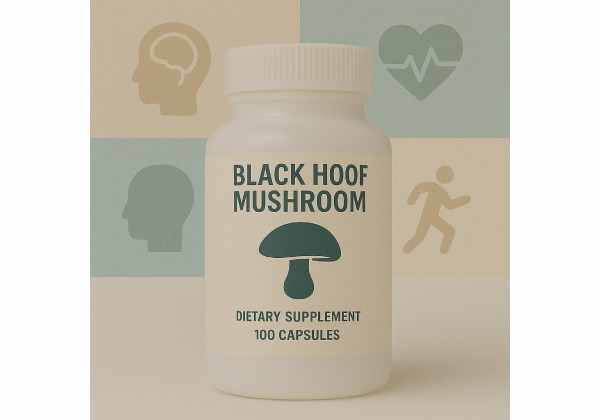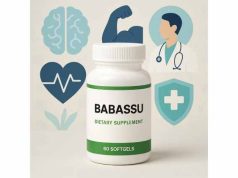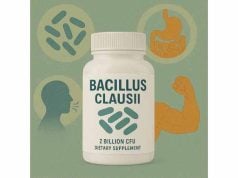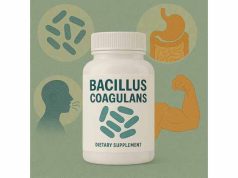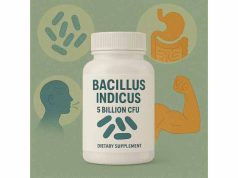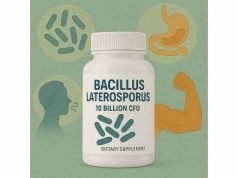Black hoof mushroom (Phellinus linteus) is a revered medicinal fungus, often overlooked in the West but highly prized in traditional Asian medicine. Recognized by its hard, dark, hoof-like shape growing on tree trunks, black hoof mushroom is celebrated for its potential immune-boosting, antioxidant, and anti-inflammatory properties. Modern research has begun to uncover its unique polysaccharides and polyphenols, which are believed to support cellular health, balance immune responses, and even assist in metabolic wellness. Whether consumed as a tea, extract, or capsule, black hoof mushroom is gaining global attention for its role in holistic health regimens, longevity support, and potential adjunctive benefits for chronic wellness needs.
Key Takeaways
- Powerful immune modulator: Black hoof mushroom is best known for supporting and regulating immune health, especially through its polysaccharides.
- Antioxidant and anti-inflammatory benefits: Compounds in this fungus help protect cells from oxidative stress and chronic inflammation.
- Traditional and modern uses: Widely used in East Asian medicine for vitality, liver health, and metabolic balance.
- Generally well-tolerated: Side effects are rare when used appropriately, but caution is advised with certain health conditions.
- Research is ongoing: While promising, most benefits are based on preliminary studies; more clinical evidence is needed for definitive recommendations.
Table of Contents
- Black Hoof Mushroom Identification, Tradition, and Overview
- How Black Hoof Mushroom Works: Unique Bioactive Compounds and Their Effects
- Evidence-Based Benefits and Modern Uses of Black Hoof Mushroom
- Safety Profile, Side Effects, and Potential Interactions of Black Hoof Mushroom
- Recommended Dosage & Best Ways to Take Black Hoof Mushroom
- Black Hoof Mushroom Frequently Asked Questions
Black Hoof Mushroom Identification, Tradition, and Overview
Black hoof mushroom, known botanically as Phellinus linteus, stands out among medicinal fungi due to its striking appearance and its storied place in Eastern herbal practice. Its fruiting body resembles a dark, dense hoof attached to tree trunks—especially mulberry, willow, and oak. The surface is typically black or dark brown with a woody, cork-like texture.
Botanical Features and Wild Identification
- Habitat: Grows on hardwood trees in East Asia, especially Korea, China, and Japan. Rare but occasionally found in North America and Europe.
- Appearance: Large, perennial bracket fungus; the outer layer is dark (almost black) and tough, with an amber to yellowish interior.
- Harvesting: Often sustainably wild-harvested for medicinal use, though some farms cultivate it for standardized extracts.
Traditional Use in Eastern Medicine
- Asian folk remedies: Black hoof mushroom has a long history in Korean, Chinese, and Japanese herbal traditions. Known as “Sanghwang” (Korea) or “Mesima” (Japan), it’s used to promote longevity, maintain vitality, and support overall resilience.
- Immune support: Traditionally brewed as a bitter tea or decoction for those recovering from illness, managing chronic conditions, or seeking preventive health.
- Holistic wellness: Regarded as a “superior tonic” for energy, liver function, and healthy aging. Sometimes used alongside other functional mushrooms like reishi or turkey tail.
Introduction to Modern Uses
With the rise of functional mushroom supplements worldwide, Phellinus linteus has become available in various forms:
- Capsules, tablets, and powders standardized for polysaccharide content
- Liquid extracts for easy dosing and absorption
- Loose dried slices for traditional tea preparations
Summary Table: Black Hoof Mushroom Basics
| Feature | Details |
|---|---|
| Scientific name | Phellinus linteus |
| Family | Hymenochaetaceae |
| Appearance | Black, hoof-shaped, woody bracket on tree trunks |
| Key regions | East Asia (Korea, China, Japan), rare elsewhere |
| Traditional uses | Longevity, immunity, vitality, liver and metabolic health |
Black hoof mushroom’s unique status as a hard-to-find wild fungus—and its growing presence in commercial supplements—marks it as an exciting but sometimes misunderstood natural health ally.
How Black Hoof Mushroom Works: Unique Bioactive Compounds and Their Effects
The modern fascination with black hoof mushroom is grounded in its complex mix of biologically active molecules, most notably its beta-glucans, phenolic acids, and terpenoids. These constituents are believed to explain much of the mushroom’s impact on the immune system, oxidative stress, and inflammation.
Key Bioactive Compounds
- Polysaccharides (especially beta-glucans): These long-chain sugars are central to the mushroom’s immune-modulating abilities. Beta-glucans bind to immune cell receptors, priming the body’s defenses without overstimulation.
- Polyphenols and flavonoids: Plant-like antioxidants in the fungus help reduce oxidative damage, support cellular repair, and may assist in controlling chronic inflammation.
- Triterpenoids and other secondary metabolites: Possess potential liver-protective and anti-inflammatory properties, supporting detoxification and metabolic wellness.
Mechanisms of Action
- Immune system regulation: Rather than simply “boosting” immunity, black hoof mushroom appears to help balance immune responses, enhancing underactive systems and calming overactive ones. This makes it a candidate for immune support during seasonal challenges or recovery.
- Antioxidant protection: Neutralizes free radicals—unstable molecules that can damage cells and accelerate aging or disease processes.
- Anti-inflammatory effects: Compounds may help modulate inflammation pathways, reducing chronic low-grade inflammation associated with many modern health issues.
- Liver and metabolic support: Animal and cell studies suggest possible protection against toxins, with improved liver enzyme balance and metabolic resilience.
Research Highlights
- Immunity and infection: Some studies in animals and cell cultures suggest enhanced resistance to certain infections, thanks to increased activity of natural killer cells, macrophages, and T-cells.
- Anti-cancer interest: Early research—especially in Asia—has explored black hoof mushroom for adjunctive support in cancer care, but results are preliminary and not conclusive.
- Antidiabetic and liver support: Some data indicate improved blood sugar control and liver enzyme profiles, though more robust clinical studies are needed.
Summary Table: Black Hoof Mushroom Compounds and Actions
| Compound Type | Noted Effect |
|---|---|
| Beta-glucans | Immune modulation |
| Polyphenols | Antioxidant, anti-inflammatory |
| Triterpenoids | Liver protection, metabolism |
| Proteins/enzymes | Cellular health, detox |
By harnessing these mechanisms, black hoof mushroom offers a broad foundation for holistic wellness, particularly for those seeking plant-based support for immunity and cellular health.
Evidence-Based Benefits and Modern Uses of Black Hoof Mushroom
The growing popularity of black hoof mushroom in supplement form is driven by a blend of tradition and emerging scientific evidence. While much of the data comes from laboratory and animal studies, human use is supported by centuries of safe, supervised consumption in herbal medicine systems.
Top Benefits as Supported by Research and Tradition
- Immune system support: Perhaps the most validated use, black hoof mushroom’s beta-glucans have been shown to stimulate innate immune cells, enhancing the body’s ability to respond to pathogens without causing immune overactivation.
- Antioxidant defense: Its polyphenols and flavonoids help neutralize oxidative stress, which is linked to aging, inflammation, and chronic disease risk.
- Liver health: Traditionally prescribed for detoxification, black hoof mushroom may protect liver cells from damage and support healthy enzyme function.
- Metabolic wellness: Some early research suggests a role in helping maintain healthy blood sugar levels and lipid profiles, supporting heart and metabolic function.
- Adjunctive cancer support: Used in Asia as part of complementary care for certain cancers, black hoof mushroom extracts have shown the ability to slow tumor growth in laboratory settings. However, this should never replace standard medical treatment.
- Gut and digestive health: Prebiotic polysaccharides may foster a healthy microbiome and improve digestion.
- Anti-inflammatory effects: Useful for managing chronic, low-level inflammation which contributes to joint pain, allergies, and metabolic disorders.
Modern Supplement Forms and Practical Uses
- Capsules and tablets: Standardized extracts offer convenience and consistent dosing.
- Liquid extracts/tinctures: Popular for rapid absorption and ease of use.
- Traditional tea/decoction: Still used in Korean and Chinese households for daily vitality and recovery after illness.
- Powdered form: Can be added to smoothies, broths, or functional beverages.
Integrative and Holistic Wellness Applications
- Seasonal immune support: Used at the first sign of colds or immune challenges.
- Daily wellness regimens: Combined with other adaptogens or mushrooms (such as reishi, cordyceps, or turkey tail) for overall vitality.
- Post-illness recovery: Helps support the immune system during convalescence.
Summary Table: Benefits and Applications
| Benefit | Application/Best Use |
|---|---|
| Immune modulation | Cold/flu season, post-illness recovery |
| Antioxidant support | Cellular protection, healthy aging |
| Liver/metabolic aid | Detox regimens, healthy metabolism |
| Gut health | Prebiotic support for digestion |
Black hoof mushroom is a promising supplement for those seeking holistic, natural strategies for immune, metabolic, and cellular wellness—always best used as part of an overall healthy lifestyle.
Safety Profile, Side Effects, and Potential Interactions of Black Hoof Mushroom
Black hoof mushroom (Phellinus linteus) has a long track record of traditional use and is generally considered well-tolerated when used as directed. However, like any supplement with active biological compounds, it’s important to understand possible side effects, safety considerations, and potential interactions with medications or health conditions.
General Safety Overview
- Traditional safety record: In East Asian medicine, black hoof mushroom is often classified as a “superior tonic,” indicating a low risk of toxicity at standard doses.
- Rare side effects: Most healthy adults experience little to no adverse effects when using high-quality supplements within recommended dosages.
Possible Side Effects
While uncommon, some individuals may experience:
- Digestive upset: Mild symptoms such as bloating, loose stools, or abdominal discomfort may occur, especially with higher doses or when first introducing the supplement.
- Allergic reactions: Rare, but people allergic to mushrooms or other fungi should use caution. Symptoms might include itching, rash, or swelling—discontinue immediately if any occur.
- Headache or fatigue: Isolated reports suggest that sensitive users may feel mild headache or drowsiness, likely due to immune or metabolic effects.
Special Populations and Contraindications
- Pregnancy and breastfeeding: There is insufficient safety data for use in pregnant or lactating individuals. Most healthcare professionals recommend avoiding medicinal mushrooms during these periods unless supervised by an experienced practitioner.
- Children: Not routinely recommended for young children without medical oversight.
- Autoimmune conditions: As black hoof mushroom modulates immune activity, those with autoimmune disorders (such as lupus or multiple sclerosis) should consult a healthcare provider before use, to avoid over-stimulating the immune system.
- Surgery or bleeding disorders: The mushroom may mildly affect blood clotting. Those preparing for surgery or with bleeding disorders should inform their doctor before starting supplementation.
Potential Drug and Supplement Interactions
- Immunosuppressive drugs: May reduce the effectiveness of medications used to suppress the immune system (such as post-transplant drugs or some treatments for autoimmune diseases).
- Anticoagulants/antiplatelet medications: Theoretical risk of additive effects on blood thinning, though clinical evidence is lacking.
- Other medicinal mushrooms or adaptogens: Generally safe, but high doses of multiple immune-modulating herbs should be used thoughtfully.
Quality, Purity, and Sourcing Concerns
- Contaminants: Wild-harvested mushrooms can concentrate heavy metals or environmental toxins. Always choose reputable brands that test for contaminants and provide certificates of analysis.
- Standardization: Look for extracts standardized for beta-glucan or polysaccharide content, which help ensure consistency and reduce risk of variable effects.
Adverse Reaction Action Steps
- If you experience severe digestive upset, allergic reactions, or unusual symptoms after taking black hoof mushroom, discontinue use immediately.
- For serious reactions (difficulty breathing, swelling, severe rash), seek emergency medical help.
- Report all supplement use to your healthcare provider, especially if you take prescription medications.
Summary Table: Safety Considerations and Precautions
| Risk/Concern | Recommendation |
|---|---|
| Allergic reactions | Avoid if allergic to mushrooms/fungi |
| Digestive upset | Start with low dose, increase gradually |
| Immunosuppressant use | Consult doctor before use |
| Surgery/bleeding | Stop use before surgery; consult your provider |
| Pregnancy/breastfeeding | Not recommended without professional guidance |
When sourced from a trusted supplier and used appropriately, black hoof mushroom is among the safer functional fungi available. However, individual responses vary, and professional advice is always recommended for vulnerable populations or those with complex health conditions.
Recommended Dosage & Best Ways to Take Black Hoof Mushroom
Finding the right dosage and delivery method is key to maximizing the benefits of black hoof mushroom while minimizing any risk. Because supplement strengths and preparations vary widely, always start with the product label and consult a healthcare provider if uncertain.
Typical Dosages in Modern Supplements
- Capsules/tablets: 500 mg to 2,000 mg (0.5–2 grams) per day is a common range for standardized extracts. Some formulas specify beta-glucan or polysaccharide content (e.g., “contains 30% polysaccharides”), which provides better dosing accuracy.
- Powders: 1–3 grams daily, mixed into smoothies, teas, or foods.
- Liquid extracts/tinctures: Typically 1–2 droppers (about 1–2 ml) up to two times per day. Always follow brand-specific directions.
Traditional Use Methods
- Decoction/tea: In traditional Korean and Chinese medicine, slices of dried black hoof mushroom are simmered for several hours to create a potent tea. About 3–10 grams of dried mushroom is used per liter of water, simmered until deeply colored and slightly bitter.
- Powdered supplement: Can be stirred into hot water, broths, or functional drinks for daily wellness.
Tips for Safe and Effective Use
- Start low and go slow: Begin at the lowest suggested dose to assess tolerance, then increase gradually.
- Take with food: This may reduce mild digestive side effects.
- Consistency matters: Many benefits are seen with consistent use over weeks to months, not a single dose.
- Cycle use: Some practitioners recommend taking mushroom supplements for several weeks, then taking a break to “cycle” the body’s response.
Combining Black Hoof Mushroom with Other Supplements
- With other mushrooms (reishi, turkey tail, maitake): Common in holistic blends for broad-spectrum immune and wellness support.
- With adaptogens (ashwagandha, rhodiola): Supports balanced stress response and energy.
- With antioxidants (vitamin C, green tea): May amplify protective benefits.
When to Avoid or Adjust Dosage
- If you have a history of allergies to mushrooms or fungi, avoid use entirely.
- If you take immune-suppressing medications or have complex health issues, consult your healthcare provider for personalized guidance.
- Pregnant or breastfeeding individuals should not use black hoof mushroom unless under expert supervision.
Signs You May Need to Adjust Your Dosage
- Persistent digestive upset, rash, or other discomfort.
- No effect after several weeks (may try a modest increase, if safe).
- Feeling overly stimulated or fatigued (try a lower dose or less frequent use).
Storage and Shelf Life
- Store in a cool, dry place away from sunlight and moisture.
- Use within 1–2 years of purchase for maximum potency.
Summary Table: Dosing and Use
| Form/Preparation | Common Dose | Notes |
|---|---|---|
| Capsules/tablets | 500–2,000 mg/day | Standardized extract best |
| Powder | 1–3 grams/day | Mix with drinks or food |
| Tea (decoction) | 3–10 grams/liter | Simmer for several hours |
| Liquid extract/tincture | 1–2 ml, 1–2x/day | Follow brand directions |
Always individualize your approach to supplementation for best results and safety.
Black Hoof Mushroom Frequently Asked Questions
What is black hoof mushroom used for?
Black hoof mushroom is most often used for immune system modulation, antioxidant support, liver health, metabolic wellness, and as a general tonic for vitality in traditional and modern herbal practices.
Is black hoof mushroom safe to take every day?
For most healthy adults, yes—when taken as directed and sourced from a reputable supplier. Long-term, daily use is common in traditional medicine, but those with health conditions or taking medication should check with a healthcare provider.
Can black hoof mushroom help fight infections?
Black hoof mushroom may support immune response and has been shown in early research to help the body resist certain infections, but it should not be relied on as a sole treatment for illness.
Are there any side effects of black hoof mushroom?
Most people tolerate it well, but mild digestive upset, headache, or allergy symptoms are possible. Stop use if you notice any adverse effects.
How do I choose a quality black hoof mushroom supplement?
Look for standardized extracts from trusted brands, with testing for heavy metals and contaminants. Ensure the product is labeled with beta-glucan or polysaccharide content for accurate dosing.
Can black hoof mushroom be combined with other functional mushrooms?
Yes, it’s often paired with reishi, maitake, cordyceps, or turkey tail for comprehensive immune and wellness support. Start with low doses to assess individual response.
Is black hoof mushroom good for liver detox?
Traditional medicine uses black hoof mushroom for liver and metabolic health. While research is ongoing, it appears to support liver enzyme balance and may aid in detoxification pathways.
Disclaimer:
This article is for educational purposes only and does not substitute for professional medical advice. Always consult a qualified healthcare provider before starting new supplements, especially if you have health concerns or take medications. Your safety and well-being come first.
If you found this guide helpful, please share it on Facebook, X (formerly Twitter), or your favorite platform, and follow us for more evidence-based wellness content. Your support enables us to continue providing trustworthy natural health information!


